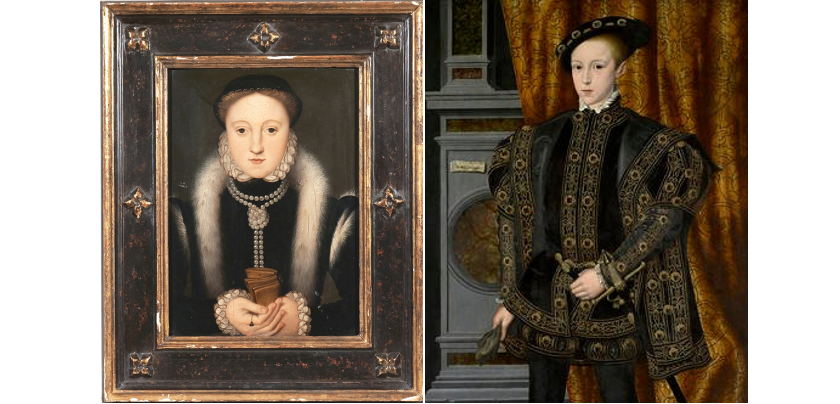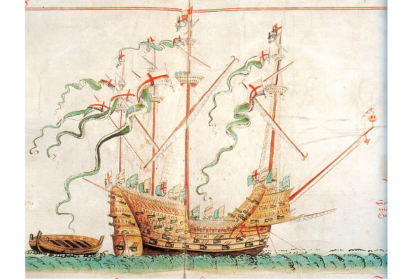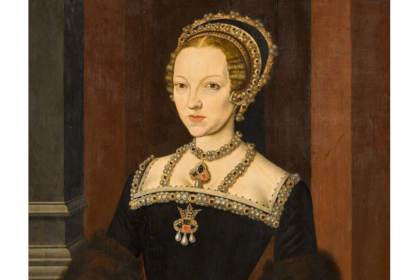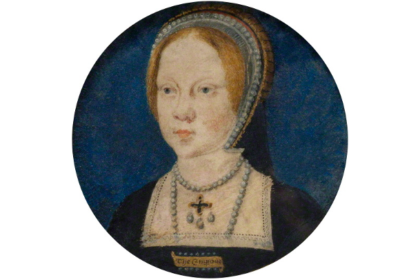ABOVE:
Portrait of Lady Elizabeth by an unknown artist, c.1555
Portrait of Edward VI by William Scrots, c.1550
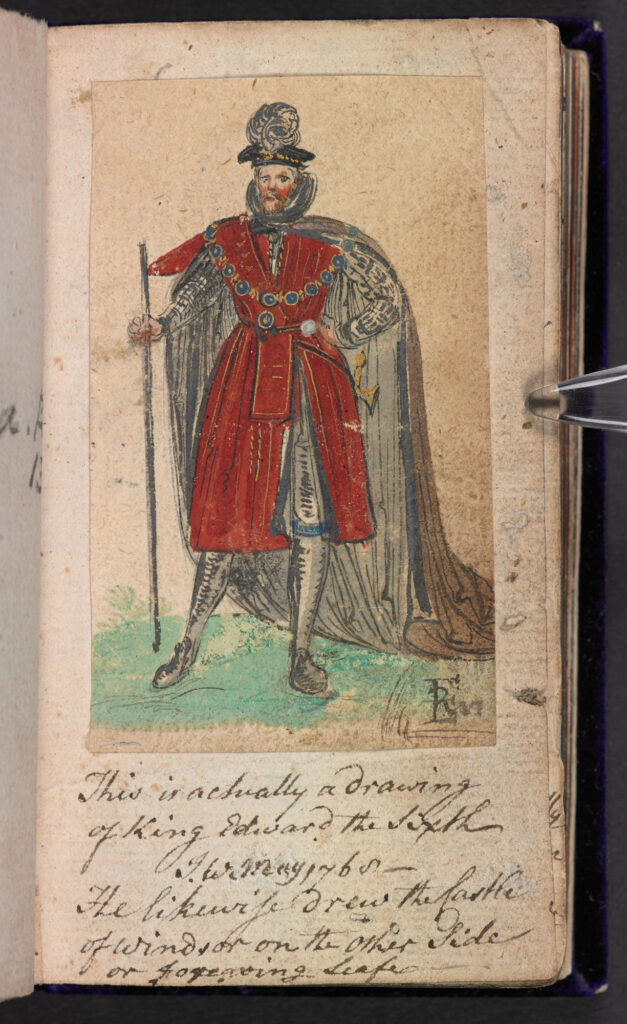
Amongst the many treasures the British Library holds, there is a curious, but little noticed, Bible – a 1538 edition of Myles Coverdale’s English Bible. Originally published in 1535, the Coverdale Bible was the first complete printed translation of the Bible into English. This distinction makes it an important artefact in its own right; however some personal additions to it make it a true Tudor Treasure.
When you open the Bible, the first two flyleaves contain small, coloured-ink drawings; the first is a view of Windsor Castle, and the other is a knight of the Order of the Garter. Extraordinarily, an unknown 18th century individual who has signed themselves ‘I.W’ claims that:
‘This is actually a drawing of (by) King Edward the Sixth. He likewise drew the Castle of Windsor on the other side of foregoing leafe.’

It is unclear what evidence convinced this ‘I.W’ that the drawings were by Edward, however it isn’t outside the realm of possibility that they really are his work. Drawing and painting were skills which were becoming a valued part of a Renaissance education for both boys and girls. Edward spent time at Windsor Castle, particularly in October 1549 when there was unrest in London, and he was known to be very interested in the Order of the Garter; in 1550 he helped redraft the Order’s statutes to reflect Protestant forms and ideals. On the other hand, the drawings do seem to be copied from another artwork that was drawn several decades after Edward’s death. We cannot say for sure who the artist was, but the idea that they could have been done by Edward is certainly compelling.
These drawings are not the only things that make this Bible noteworthy. Turning a few pages, you come to a poem, written in a distinctive hand, made very recognisable by the famous signature at the bottom of the page: Elizabeth’s.

She writes:
Among good thinges
I prove and finde, the quiet
life doth muche abounde,
and sure to the contentid
mynde, ther is no riches
may be founde.
Your lovinge [erased: ‘frende’] maistres,
Elizabeth
This poem was certainly written in the late 1540s or 1550s, before Elizabeth’s ascension; after she became queen her signature changed, ending in ‘R’ for Regina. Known as Lady Elizabeth during this period of her life, We only have a few pieces of Elizabeth’s work from this time, making this a very special piece.
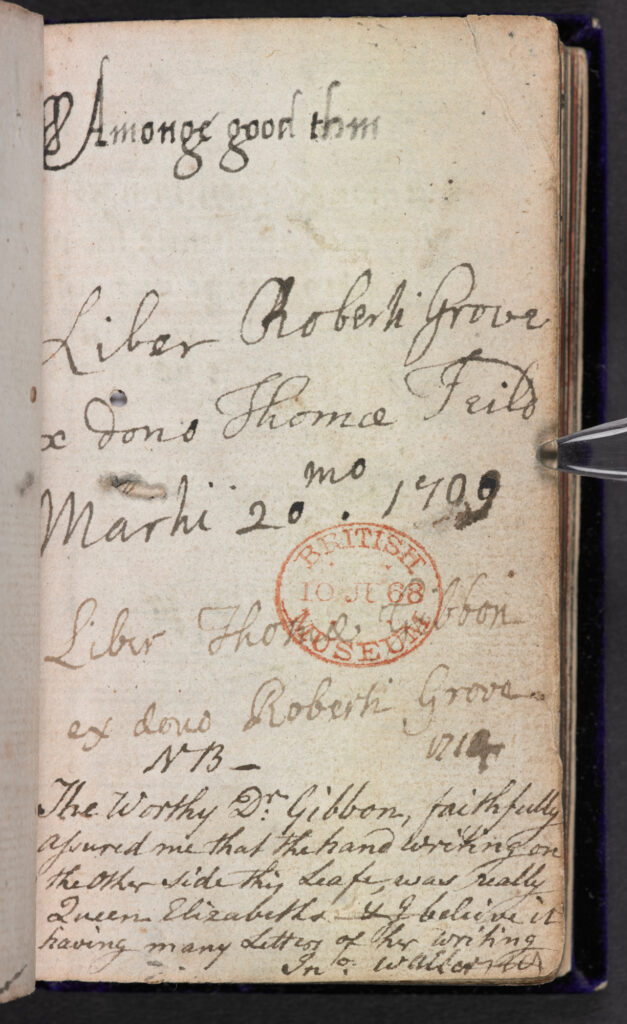
There is an uncertainty to this inscription which points towards an earlier date and a younger Elizabeth. You can see on an earlier page where she started writing but then changed her mind and moved to a later page. She also originally signed the poem as a ‘frende,’ but clearly felt that was too intimate and changed it to ‘maistres’; it seems that Elizabeth gifted the Bible to her lady-in-waiting, Anne Poyntz (Anne Heneage upon her marriage to the man who would become one of Elizabeth’s favourites as queen, Thomas Heneage), who wrote an answering verse on the next page.
There are several periods of Elizabeth’s life which this poem could refer to; during both Edward and Mary’s reigns Elizabeth dealt with scandal and disfavour by withdrawing to her own estates and living the ‘quiet life.’ It was also a common theme of Protestant instruction, so may have drawn from Elizabeth’s theological studies rather than her lived experience.
If the drawings were indeed created by Edward, Elizabeth probably received the Bible from him as a gift; in which case she probably gave it to her lady-in-waiting before Edward’s death in 1553.
Regardless of the provenance of the drawings, Elizabeth’s inscription makes it a beautiful, intimate piece of Tudor history.

